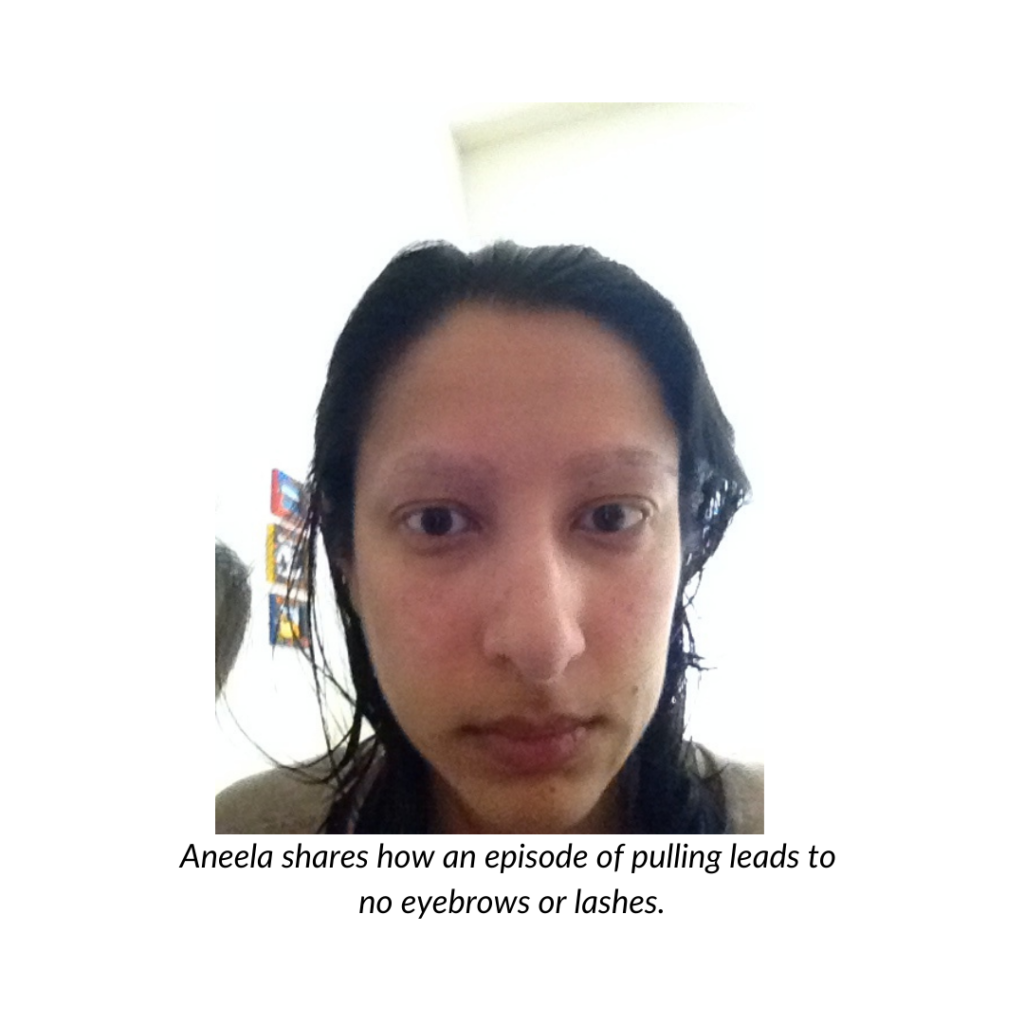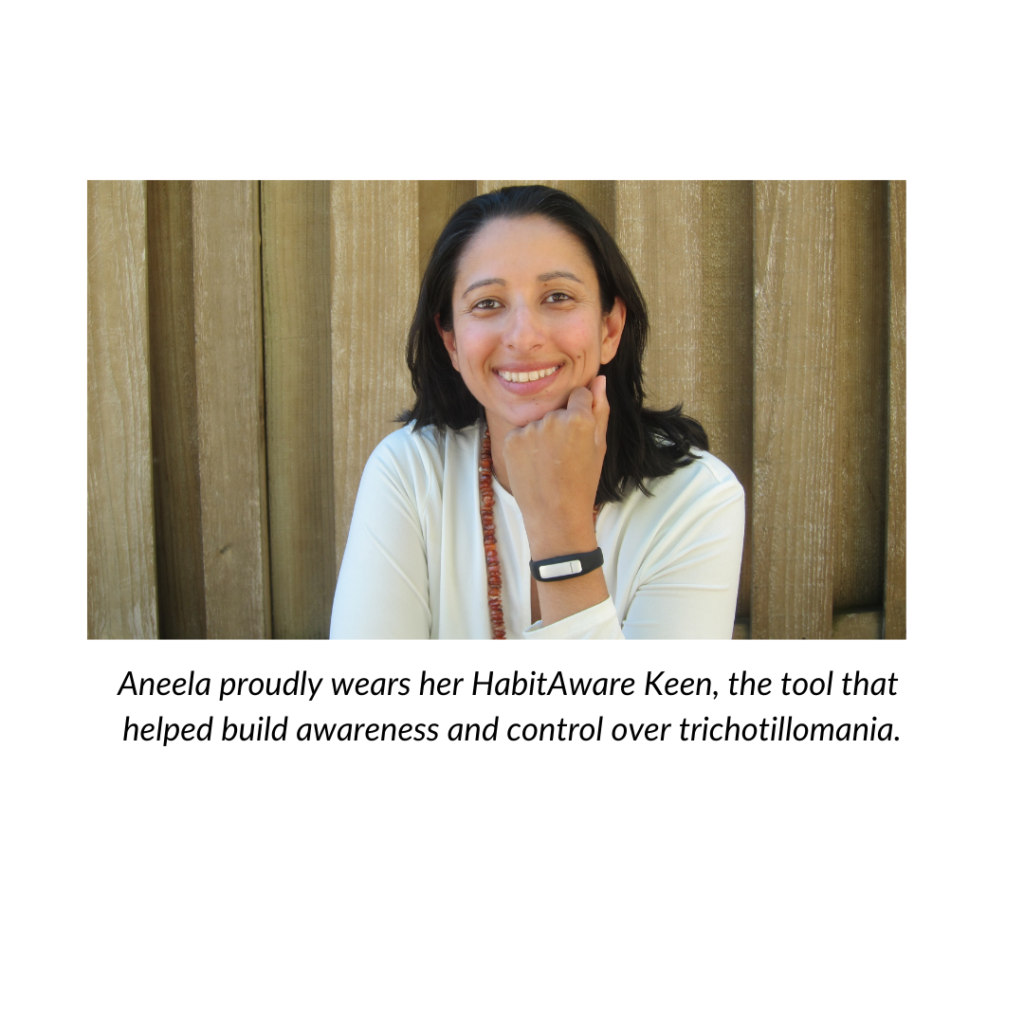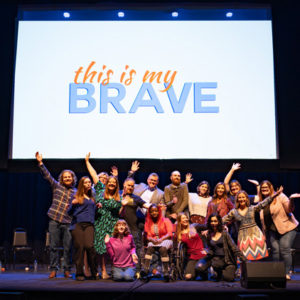Trichotillomania: From Concealing to Healing
My name is Aneela Idnani. I am cofounder of HabitAware and I pull out my hair.
Whew.
Are you wondering how I can be so open about my trichotillomania?
I wasn’t always this way. I started pulling in my early tweens and it got worse when my father fell sick with cancer. I thought something was wrong with me, so I hid in shame and self-loathing for more than twenty years. But today I am 100% shame free and nearly 100% pull free – and that is good enough for me…It’s also where I hope you can one day be too!
As a mental health advocate and BFRB community leader I now raise awareness, education and compassion for those with trichotillomania and other body focused repetitive behaviors (BFRBs) through public speaking, like my TEDx talk, to make the invisible, visible.
I believe so greatly in the methodology of how I came into recovery that I want to share it with you, in hopes it can help kickstart your recovery, or help a loved one suffering in silence.
1. I sought support
This didn’t happen by choice. I was caught without eyebrows one day by my husband! Yep, I was even hiding from the person I vowed in sickness and health to be open with. I feared his rejection and that fear fueled hiding behind a black eye pencil.
One morning as I went into the bathroom to cover up the loss of my entire eyebrow the night before, he bumped into me and asked “where are your eyebrows?” As I told him the truth, “I have trichotillomania…I pull out my hair…,” he met me with such loving kindness that made it easy to share the struggle I endured for 20 years.
In this same way, I hope you can find one person who makes you feel safe and comforted to confide in and share your trichotillomania secret. Here is an article I recently wrote with more on how to share your trichotillomania and seek support from a loved one.
By being open to my husband’s support, I realized it is the secret of our trichotillomania / BFRB that makes us sick – causing us shame and guilt and to constantly live in fear of being found out. When we release the secret, we can shift our time and energy from concealing to healing.
2. I found purpose in my pain
For many years I let my trichotillomania shape my thoughts about myself – that I was worthless, ugly and never going to amount to anything. This culminated in a near suicide when I was in my mid-20s. I took time off from work to reset and find hope again – but not recovery. I continued in hiding until just a few years ago.
As I let my husband into my world, he began noticing when I was pulling. One evening after work, I plopped on the couch to watch TV. Without realizing, my hands started grazing my eyebrows. My husband noticed, and gently took my hand in his. His loving gesture followed with my A-HA! moment as I exclaimed immediately, “OMG! I wish I just had something that notified me so I could stop hair pulling!”
In the coming months we connected with two friends in Minneapolis and designed a smart bracelet that brings you into awareness during your hair pulling, skin picking or nail biting moments so that you can take control, HabitAware Keen – and now Keen2!
Since we started in 2016, we’ve helped tens of thousands of people in more than 70 countries and have thousands of mental health treatment professionals who recommend us to their patients for real-time BFRB behavior change support.
How can you apply this idea of “finding purpose in your pain” to your life?
When we look at the pain we are enduring, rather than ignoring it, running from it, or pushing it down – as I did for so long – we can start to understand that it is there to bring us out of our lowness, to help us grow and learn about ourselves and our needs.
I encourage you to look at your BFRB pain in a new light – “What can I do with this? How can I learn from my hair pulling?” For some of you this may help you find the “why” behind your pain so you can sit with it, deal with it, and make it less of a weight to carry. For others it may evolve into becoming a community leader – raising awareness, education and support, for others!
3. I learned how to take control by taking better care of myself
In using the trichotillomania awareness bracelet we invented, I became more aware of my restless hands and better understood my triggers. In turn this allowed me to choose healthier soothing strategies to replace my eyebrow and eyelash pulling: drinking water, eating nuts, stretching and others. In time, those strategies became “go-to’s” so that when I feel discomfort, my mind now automatically seeks out these healthier strategies. It’s become an entire lifestyle shift that has taught me to put my needs first and focus on my self care so that I am able to care for those around me – my husband, my children, my friends, my students, and, of course, my Keen family.
My hope in sharing my story is to remind you that you are not alone. Please join the HabitAware Keen family so we can help you on your journey.
***
***
About the Author:
Aneela is the inspiration for HabitAware. She is a mobile app designer and has produced award-winning interactive advertising campaigns. Aneela has had trichotillomania for 20+ years and is excited to help others like her change their life. Be sure to follow her on Instagram at @habitaware and @aneelaidnani
***
Read Morgan’s story next!



